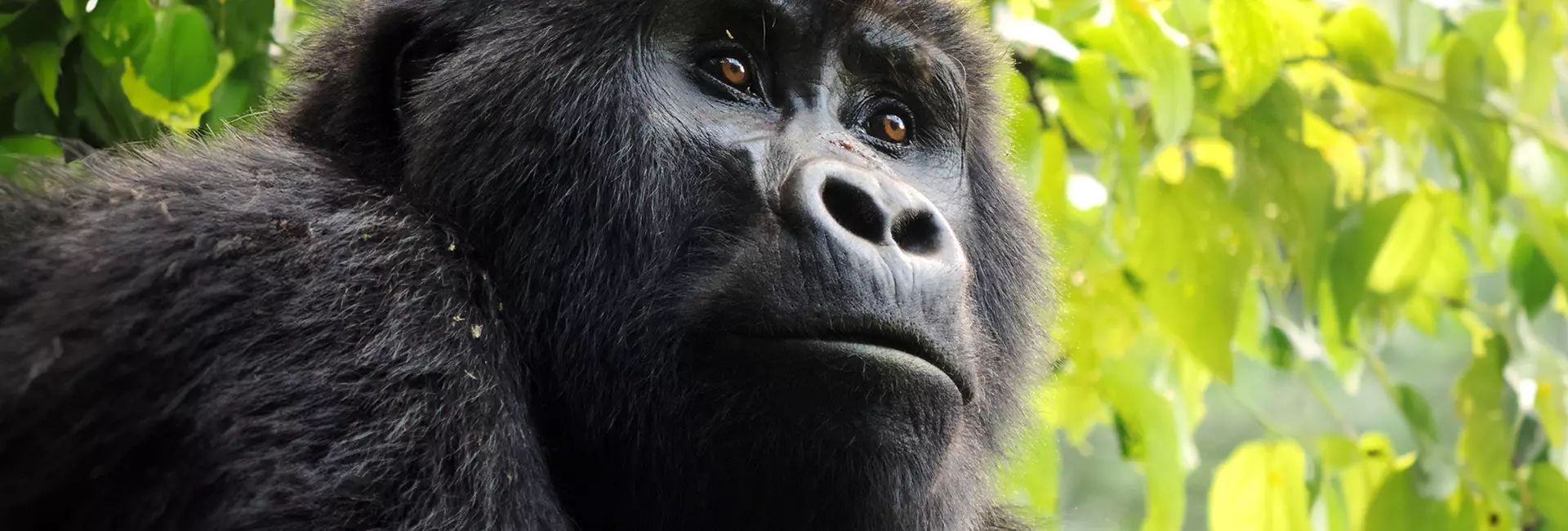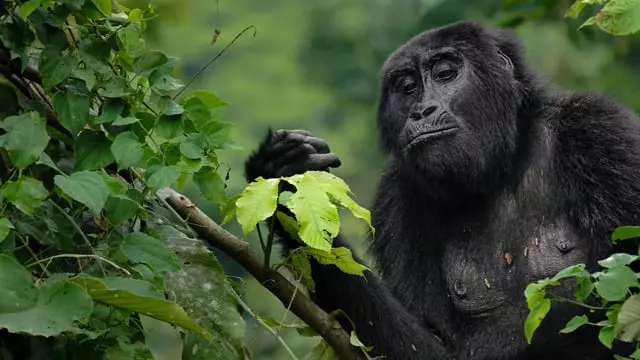
Gorillas
Volunteer With Gorillas
If you're seeking a travel experience that connects you with nature, conservation, and local communities, volunteering with gorillas provides a meaningful adventure in the stunning jungles of Africa. Conservation efforts in this area are not only essential but have also proven effective in combatting the devastating effects of habitat loss, poaching, and human-wildlife conflict on gorilla populations.
Influenced by the groundbreaking work of Dian Fossey, gorilla volunteer projects and tours are designed to provide a meaningful and immersive experience, incorporating close encounters during gorilla trekking, restoring habitats, and promoting sustainable practices and environmental awareness within local communities.
Join The Great Gorilla Project or the Ultimate Wildlife Tour in Uganda and help contribute to the protection of one of our closest relatives in the animal kingdom!

Projects Do More
13 Nights from $4,369.00
Enjoy the thrill of Gorilla Trekking on this gorilla conservation project in Uganda
View projectTours See More
On the Blog
Gorilla Information
Gorillas At A Glance
Endangered Status
Endangered
Number remaining in the wild
Approx. 300,000 In Total
Endemic Region
Africa
There are two species of gorilla and four subspecies. All are listed as endangered or critically endangered.
The most recent surveys of Mountain gorillas suggest there are roughly 1,004 individuals left in the wild. This is a substantial increase from the 2008 assessment and, as such, saw the subspecies downgraded from critically endangered to endangered. However, the ICUN Red List states that ongoing threats could warrant relisting to critically endangered at any time. The most endangered gorilla subspecies is the Cross River gorilla, with approximately 100-250 individuals remaining.
Population numbers for both the Eastern and Western lowland gorillas are unknown due to the difficulty of gathering accurate data, often owing to violence and civil unrest in their habitats. However, both species are listed as critically endangered. The ICUN Red List reports that Western Lowland gorillas are predicted to suffer a population reduction of more than 80% over three generations (approximately 66 years) due to poaching, disease and habitat loss. Recent surveys of the Eastern Lowland gorillas show their populations have dropped from around 16,900 individuals to 3,800 since 1994. At 11 sites across their geographical range, their population numbers are declining at a rate of 5% each year, which could see 97% of the entire population gone by 2054.
Gorillas are endangered due to various threats, which have devastating effects because of their already small population size and low reproductive rates. The main threats include:
- Habitat Destruction & Fragmentation: Possibly the largest threat to gorillas is the drastic reduction of their habitat. Logging, agriculture, and mining operations are to blame for mass deforestation, reducing the areas for gorillas to live and find food. The expansion of human populations has also resulted in the loss and fragmentation of natural habitats and is often the driver for human-wildlife conflict.
- Human-Gorilla Conflict: As human populations expand and national parks border human settlements, encounters between humans and gorillas have increased, which has, in many cases, resulted in fatal conflicts. Gorillas have ventured outside national parks to raid crops of nearby villages, and people often enter the parks illegally to gather resources such as fruit and firewood. Both have contributed to an increase in human-wildlife conflict incidents.
- Civil Unrest and Political Instability: Many regions where gorillas live have experienced prolonged conflict and instability, such as parts of the Democratic Republic of Congo. Sadly, this type of unrest leads to the disruption of conservation efforts and usually increases poaching.
- Poaching: Poaching is still a threat to gorillas and the bushmeat trade in West and Central Africa is one of the leading causes. In some regions, gorilla meat is considered a delicacy and a sign of wealth, and due to the size of gorillas, the weight of the meat can make them a desirable target. However, gorillas also fall victim to snares and traps meant for other animals. Gorilla body parts have also appeared heavily in private trophy collections and traditional medicines. Infant gorillas have appeared in the illegal pet trade, usually as a secondary result of the bushmeat trade. Sadly, the survival rate for gorillas in captivity is low, and many die from lack of appropriate care. While gorillas make up only a small percentage of wildlife poached worldwide, the effects can be devastating due to their small population size and low reproductive rates.
- Disease: Outbreaks of Ebola have devastated gorilla populations, especially western lowland gorillas. It was estimated in 2003 that a third of wild gorillas had died due to the Ebola virus, and it still poses a threat to this day. Other respiratory infections and diseases transmitted from contact between humans and gorillas (zoonotic diseases) also pose significant threats.
- Climate Change: The effects of climate change can alter rainfall patterns and temperatures, which has a knock-on effect on food availability and suitable habitats for gorillas and other wildlife. Climate change is likely to impact neighbouring human populations, i.e. lower crop yields, which can put more pressure on gorilla populations as people turn towards the forests for additional resources.
Gorillas live across 10 African countries: Democratic Republic of the Congo, Uganda, Rwanda, Nigeria, Cameroon, Republic of Congo, Central African Republic, Equatorial Guinea, Gabon, and Angola.
While there are sanctuary-based gorilla volunteer projects, they usually require long durations of volunteering, specific visas for the resident countries, and may require participants who speak French. Additionally, various medical tests are often necessary.
Gorilla volunteer projects such as The Great Gorilla Project and the Ultimate Wildlife Tour in Uganda take place in the stunning Bwindi Impenetrable National Park and Mgahinga Gorilla National Park in Uganda. Both the project and tour involve gorilla trekking to witness them in their natural habitats. The Great Gorilla Project heavily features working with local communities, supporting the education and development of sustainable practices. This aids gorilla conservation efforts while uplifting impoverished communities.
You can trek with gorillas in Uganda, Rwanda and Congo. The majority of gorilla trekking holidays, tours and volunteer projects are based in Uganda, as it’s considered the safest country to visit gorillas and is home to half the world’s population of mountain gorillas.
During these treks, you’ll interact with gorillas by sitting with the family and observing them from a safe distance. However, hands-on interaction with gorillas is not allowed, not only for safety reasons but due to the risk of disease transmission.
Efforts to save mountain gorillas involve a combination of conservation strategies, including habitat protection, anti-poaching measures, community involvement, and scientific research. Organisations like the Dian Fossey Gorilla Fund and the World Wildlife Fund (WWF) play significant roles in funding and implementing projects for gorilla conservation.
Finally, gorilla tourism has played a significant role in conserving the species by funding conservation projects, creating jobs, and mitigating poaching risks. Volunteering with gorillas, in particular, helps protect the apes and their habitat, alongside supporting local communities surrounding their range.






